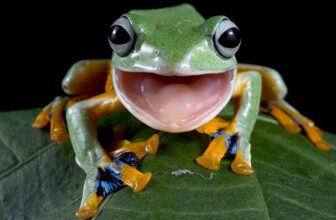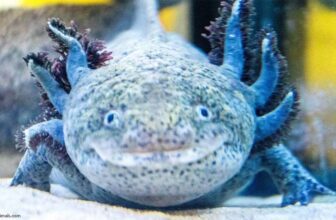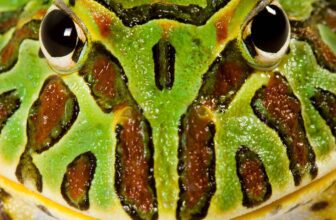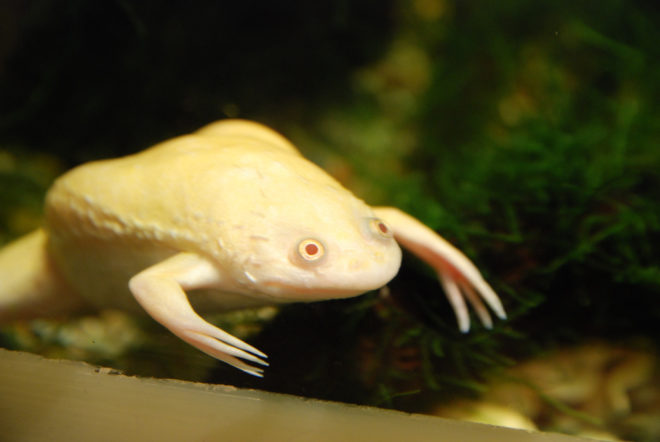The island of Madagascar, located off the southeastern coast of Africa is home to a variety of interesting species found nowhere else in the world. The island’s climate is particularly appealing to a diverse population of frogs including Madagascan, Golden, and the Blue Legged Mantella. One of the most popular frogs from the island is the tomato frog, known for its docile personality and bright, speckled appearance.
The males of the tomato frog species tend to be of a bright-yellow hue, while females tend to be orange or bright red. This frog can be purchased, so some individuals choose to keep these tomato frogs as pets. However, as this is not a traditional pet, not a whole lot of information about caring for a tomato frog is out there.
The goal of this guide is to introduce potential owners of the tomato frog to the species, talk about their history, their nature as pets, and how to take care of one should you choose to take one into your home.
Caring For A Tomato Frog
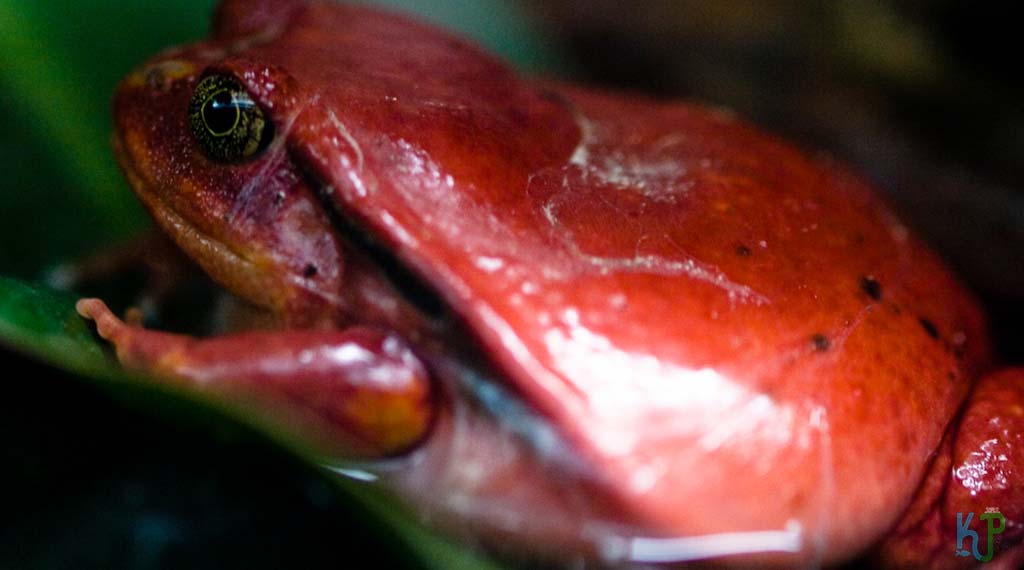
First, let’s cover some bullet point facts about the tomato frog that you might find interesting to know:
- The tomato frog was found and identified in the late 19th century on the Madagascan isle.
- Between 1872 and 1877, two additional variations of the species were also discovered there. The three species are known as:
- Tomato Frog (Dyscophus antogil)
- Antsouhy Frog (Dyscophus insularis)
- Sambava Frog (Dyscophus guineti)
- The tomato frog is the most popular of the species to be adopted to be a pet, but it was not the case until it was listed as endangered back in 1990.
- The rise in pet adoption of the tomato frog was largely due to researchers wanting to breed them in captivity, but reptile enthusiasts soon took a liking to them too. Many enjoy the frog’s bright, vibrant colorations which span from warm shades of red, orange, and yellow with brown stripes running down the body and peppered with black speckles.
- Tomato frogs are calm creatures who lead a sedentary lifestyle.
- They are nocturnal, burrowing underground during the day while hunting at night.
- They preserve energy by not moving around too frequently.
Do Tomato Frogs Make Good Pets?
There are several reasons why tomato frogs make great pets. First, they do not need a large enclosure as many reptiles and amphibians do, they are docile by nature, spend most of the burrowed in the substrate, and have simple husbandry and care routines. All of these attributes make them great pets for beginners. At night, the tomato frog will maneuver about the terrarium, being vocal, and using ambush tactics.
While the frogs are docile, they do get stressed out at times. When they do, they secrete toxic mucus. This is one of several reasons for owners to not handle the animal but let it spend time the way it wishes. One thing that goes without saying, is that the tomato frog should not be cohabitated with any other breed of frog.
Tomato Frogs Species Appearance
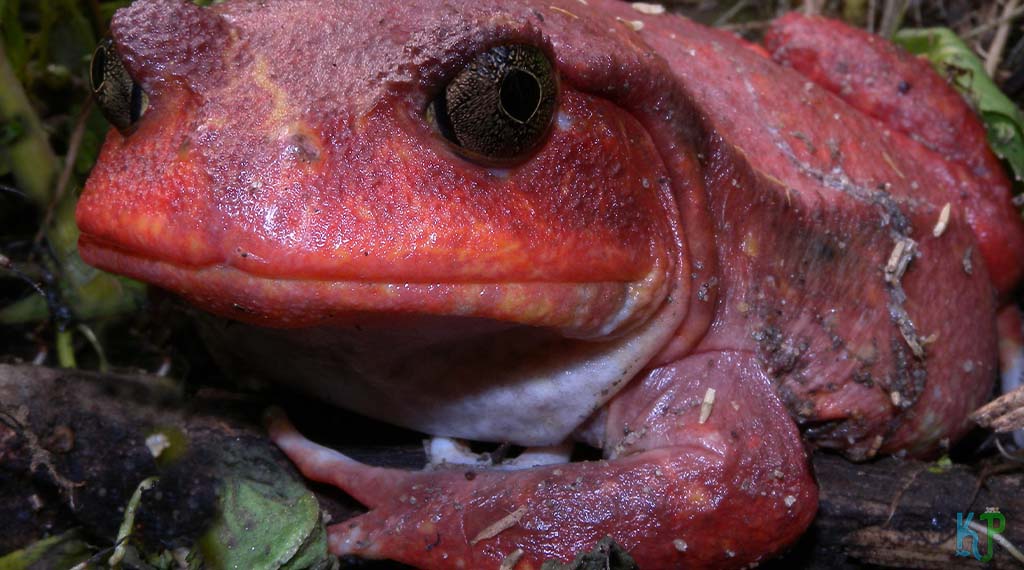
While the three tomato frog species all come from Madagascar, they look different. The tomato frogs are predominantly of vibrant red coloring and are generally found in Madagascar’s northeast regions. They can grow to the maximum size of about four inches. The males are yellow-orange in color, while the females are orange and bright red. Both genders have a brown stripe lining from behind their eyes down the back of each leg. Their undersides are of a muted white hue, and most have a speckle of black spots peppering their backs.
The Sambava frog sometimes called the “false tomato frog,” is a subspecies of the tomato frog, distinguished by its burnt orange coloring, not being as vibrant as the tomato frog proper, adorned with a more muted appearance. They reside primarily in the lowland forests or marches of eastern Madagascar.
The Antsouhy frogs resemble the Sambave frogs in appearance. However, this species is found in the savannas and tropical forests of Madagascar’s western portion.
The Size Of A Tomato Frog
The female tomato frog tends to grow as the larger of the two genders, measuring up to about 4 inches, while the males generally range between 2.5 and 3.5 inches during adulthood. The female tomato frog can weigh as much as half of a pound.
As with many other frog species, the tomato frogs hatch as tadpoles from eggs, undergoing a metamorphosis into adulthood about two months after their birth. A tadpole (about 1/4 inch in length) is regarded as a frog between the ages of 0 to 2 months, which eventually grows to about 1 to 1.5 inches as a juvenile between the mark of 2 months and 24 years. An adult is any frog over 2 years of age, with a length of 2.5 to 4 inches.
The Tomato Frog’s Diet
In their natural habitat, the tomato frogs are carnivorous creatures, generally hunting burrowing insects, worms, and snails. Since they are nocturnal hunters, most of their feeding comes during their primary hunting hours of the night. The frog will wait patiently and calmly for unsuspecting prey to move past its hiding spot, at which point it will attack.
While the tomato frog is not that large, it has a voracious appetite with a seemingly active metabolism. When in captivity, the tomato frog’s diet largely includes waxworms, mealworms, super worms, and crickets, though an adult frog can handle eating a small pinkie mouse. Juveniles should be fed between 4 to 5 times daily, while an adult tomato frog will need to feed 6 to 10 times per day.
It is important to include more than just one type of insect in the tomato frog’s diet. Additionally, a supplemental dusting of prey feed with a reptile calcium supplement should be incorporated into the feedings three times a week for juveniles, and once a week for adults.
Tomato frogs will not drink water, so don’t worry when you never see it occur. This does not mean they don’t need it, however, as amphibians absorb it through their skin. The terrarium should include a shallow dish filled with dechlorinated water with a verified neutral pH level.
What Is The Lifespan Of A Tomato Frog?
In captivity, tomato frogs can live up to eight years, pending they are supplied with the correct and appropriately calcium-supplemented diet. They also need to be cared for and their stress levels need to stay at a minimum. A large portion of stress experienced by these frogs is by being forced to share their living space with other frogs, irrespective of whether it is a different frog species or another tomato frog similar in age and size.
Amphibians absorb chemicals through their skin. When humans handle tomato frogs, chemical toxins on our skin are absorbed by the frots and could negatively impact their health. Therefore, it is strongly recommended that they are not handled. If healthy, a frog will display a bright and vibrant coloring, will have clear eyes, and will not secret toxic mucus through its skin.
The Habitat Of A Tomato Frog
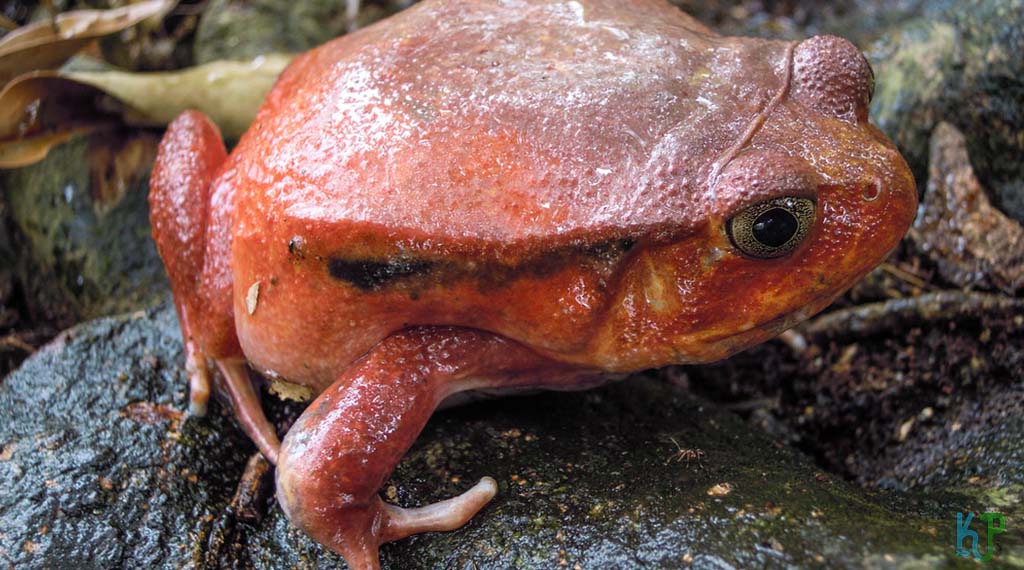
Since tomato frogs come from the tropical and subtropical regions of Madagascar, they survive best in swamps, rainforests, and marshes. But that doesn’t mean that setting up a suitable environment is hard to set up for owners. In fact, it is because it is simply that these frots are great for beginners. Ideally, they should be housed in a 20-gallon tank, though they can handle a 10-gallon one just fine too. However, the tank must be more broad horizontally than vertically.
The tomato frog does not swim, so its tank should be filled with a substrate which will give it a nice environment to burrow in during the day. There should be about three inches of substrate in the tank, and the best type to use is made up of coconut fiber due to its softness. The tank should also contain some hollow logs and branches.
Live plans can also be added to the tank due to the coconut substrate, but it is important to be aware that the frog’s burrowing habit will likely kill those plants. For that reason, fake plants in the tank are best.
Check our pick for the best 20 Gallon Reptile Tank for Tomato Frog: REPTI ZOO
Setting Up A Living Environment For The Tomato Frog
The best setup involves the creature residing in a glass, 20-gallon tank, lit with low wattage 2.0 UVB/UVA lights, with a floor covered with roughly three inches of coconut fiber substrate. During the day the frog will burrow itself in leaves. The UVB/UVA lighting for the tanks is more for the plants that could be growing there rather than the frog since the frog will be burrowing during the day and coming out at night.
The temperature in the tank needs to be between 65 and 85 degrees Fahrenheit, and contain a high humidity of 65% to 80%. The coconut fiber substrate will assist significantly in keeping the humidity high. The enclosure should use a hygrometer and be misted on a daily basis.
Tomato Frog Behavior
While the tomato frog has a docile disposition and isn’t overly territorial. But it is recommended that only frogs of the same age and size be housed together and all need to be the same tomato frog species. The reason putting tadpoles or juvenile frogs is not a great idea is that adult tomato frogs will often cannibalize them.
While the frog is calm, it can get stressed at the sensing of danger, reacting by either secreting a mucous-like white toxin through its skin or swelling its body in order to look bigger to the source of its perceived danger, a trait common among many animal species.
During the night, male tomato frogs are particularly vocal, using their calls to attract the attention of mates. During the day, it is not uncommon to find the frog burrowing or hiding out of sight.
Are Tomato Frogs Poisonous?
One of the stressors of the tomato frog tends to be being handled, at which point they secreted a sticky, white, substance that is quite toxic as a self-defense mechanism. This is actually a trait shared by many Madagascar-native amphibians. Therefore, the frog should only be handled when necessary, such as during health checkups or enclosure maintenance. If they are handled, hands should be washed thoroughly before and after touching them. Handling the tomato frog for extensive time periods will result in its secreting the white toxin onto the handler.
Purchasing A Tomato Frog
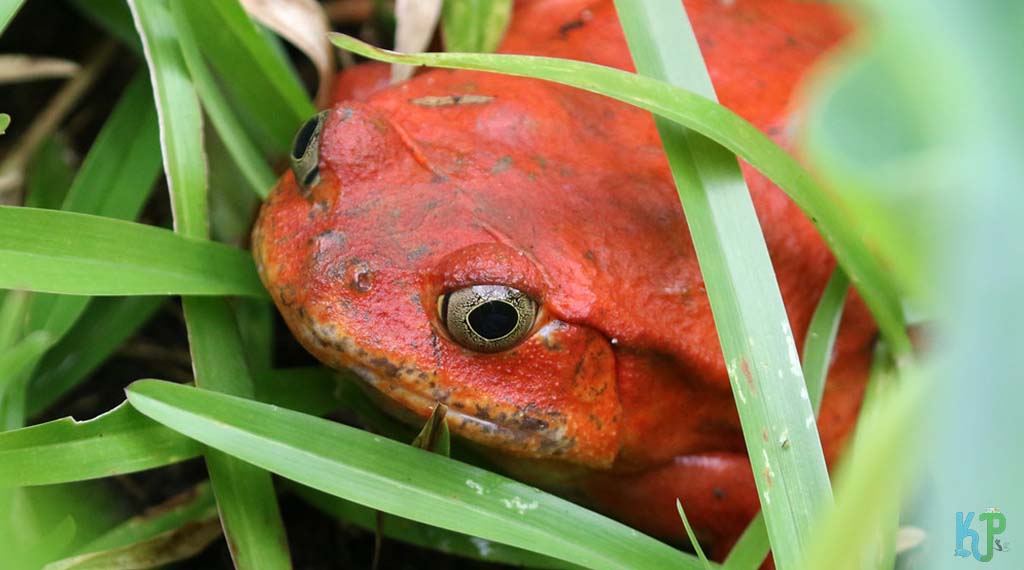
Most beginners are apt to purchase the tomato frog at its tadpole age, with many purchasing them right around the age of 2 years old. They typically cost from as low as $20 to about $50 when purchased from private breeders. They are sold in most pet stores as adults and are not hard to find as they are popular amphibians. It is, however, important to inquire about the frog’s health.
Some telling signs about its health can be deduced from the frog’s physical appearance, with healthy frogs being vibrant in color, plump, and able to demonstrate a wide motion range. The habitat for the frog is substantially more costly than the frog itself. The tank will run between $100 and $500, with additional funds needed for a heating lamp, substrate, food, and decor.
Summary
As we learned, the tomato frog comes in three different species, first discovered in the Madagascan rainforests in the 1800s. The species is bright red-orange in coloration with stripes down the body and black speckles up the back.
The species is low maintenance, docile and calm, and their biggest ask is a tank with a layer of a substrate. This is a great frog for those who are frog-owning beginners who are not interested in handling the animal.
Don’t miss out on the next article in our series on pacman frog care! Learn everything you need to know to keep your pet frog healthy and happy: Everything About Taking Care Of A Pacman Frog
Frequently asked questions:
What do tomato frogs eat?
Tomato frogs, also known as Dyscophus antongilii, primarily eat insects and other small invertebrates. They may also occasionally consume small vertebrates such as lizards or mice. They can be fed crickets, mealworms, and other appropriate insects in captivity.
How long do tomato frogs live?
Tomato frogs, can live for up to 10-15 years in captivity with proper care. In the wild, their lifespan is likely shorter due to various factors such as predation and disease.
How big do tomato frogs get?
Tomato frogs are medium-sized frog species. They typically reach an adult size of 4-5 cm (1.5-2 inches) in length, with males slightly smaller than females. They have a distinctive bright red coloration that makes them easy to recognize.



